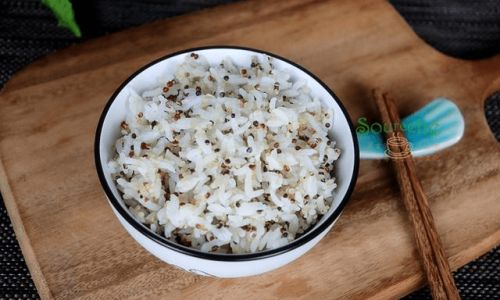Introduction
In the vast culinary landscape, traditional dishes often hold a special place, not just for their taste but also for the stories and memories they evoke. One such dish that combines simplicity with profound flavor is the pork and cabbage roll, a staple in many households across various cultures. Whether you call it a cabbage roll, golubtsy, or something else, the essence remains the same: tender, flavorful meat wrapped in the sweet, earthy embrace of cabbage leaves, all simmered to perfection in a rich, aromatic broth.
In this guide, we’ll delve into the art of making pork and cabbage rolls, from selecting the freshest ingredients to perfecting the cooking process. By the end, you’ll be equipped with the knowledge and skills to create a dish that not only satisfies your taste buds but also brings a touch of nostalgia and warmth to your table.
Section 1: Ingredients and Preparation
1 Selecting the Ingredients

The key to any successful dish lies in the quality of its ingredients. For pork and cabbage rolls, here’s what you’ll need:
- Cabbage: Choose a head of green cabbage that is firm, with tight, crisp leaves. Avoid cabbages with soft spots or yellowing outer leaves.
- Ground Pork: Opt for a blend of pork shoulder and pork belly for the best flavor and texture. The fat content helps keep the meat moist during cooking.
- Aromatics: Finely chopped onions, garlic, and fresh herbs like dill, parsley, or thyme add depth and complexity to the filling.
- Seasonings: Salt, pepper, paprika, and a pinch of caraway seeds can elevate the dish’s traditional flavors.
- Rice or Grain: Cooked rice, barley, or even quinoa can be added to the filling for added texture and to absorb the flavors of the broth.
- Broth: Chicken, beef, or vegetable broth is essential for simmering the rolls. Homemade broth adds an extra layer of flavor, but good-quality store-bought broth works well too.
- Tomato Paste or Ketchup: These ingredients add a tangy, savory element to the broth.
2 Preparing the Ingredients
- Cabbage: Begin by removing the outer leaves of the cabbage, which can be tough and dirty. Cut the head into quarters, removing the core. Bring a large pot of salted water to a boil and blanch the cabbage quarters for about 3-5 minutes until the leaves are pliable but not overly soft. Drain and let them cool slightly. Carefully separate the leaves, keeping them intact.
- Meat Mixture: In a large bowl, combine the ground pork, cooked rice (if using), chopped onions, garlic, herbs, salt, pepper, paprika, and caraway seeds. Mix well until all ingredients are evenly distributed. The mixture should be moist but not too wet. Adjust seasoning to taste.
Section 2: Assembling the Rolls
1 Rolling Technique

- Lay a cabbage leaf flat on a clean surface, with the stem end towards you. If the leaf is large, you can trim the thick stem part for easier rolling.
- Spoon a generous amount of the meat mixture onto the center of the leaf, spreading it out slightly but leaving enough space around the edges to seal the roll.
- Fold the bottom edge of the leaf over the filling, then fold in the sides. Roll the leaf away from you, tightly but gently, to form a neat cylinder. Repeat with the remaining leaves and filling.
2 Securing the Rolls
- To ensure the rolls hold their shape during cooking, you can secure them with toothpicks or kitchen twine. Place the rolls seam-side down in a single layer in a large, heavy-bottomed pot or Dutch oven.
Section 3: Cooking the Rolls
1 Preparing the Broth
- In a separate pot, sauté chopped onions and garlic until translucent. Add tomato paste or ketchup and cook for another minute, stirring constantly. Pour in the broth and bring to a simmer. Adjust seasoning with salt and pepper.
2 Simmering the Rolls

- Carefully pour the broth over the cabbage rolls in the pot, ensuring they are fully submerged or at least mostly covered. If necessary, add more broth or water to achieve the desired level.
- Bring the pot to a gentle simmer over medium-low heat. Cover and cook for about 1.5 to 2 hours, or until the cabbage is tender and the meat is cooked through. Check occasionally to ensure the broth isn’t boiling too vigorously, as this could cause the rolls to disintegrate.
Section 4: Serving and Enjoying
1 Finishing Touches
- Once cooked, remove the cabbage rolls from the pot using a slotted spoon and place them on a serving dish. Let them rest for a few minutes before serving to allow the flavors to meld and the rolls to firm up slightly.
- If desired, you can thicken the remaining broth with a cornstarch slurry (mixed with a little water) to create a gravy. Pour some of the broth over the rolls or serve it on the side.
2 Garnishing and Pairing
- Garnish the cabbage rolls with freshly chopped herbs, a dollop of sour cream or yogurt, and a sprinkle of freshly ground black pepper.
- They pair wonderfully with a side of mashed potatoes, roasted vegetables, or a simple green salad. For a more traditional touch, serve them with a slice of crusty bread to soak up the delicious broth.
Section 5: Tips and Variations

1 Tips for Success
- Blanching the cabbage leaves just until pliable is crucial. Overcooking them will make them too soft and difficult to roll.
- Don’t overfill the cabbage leaves, as this can make rolling challenging and may cause the rolls to burst during cooking.
- Using a thermometer to check the internal temperature of the meat (160°F or 70°C) ensures it’s cooked safely.
2 Creative Variations
- Swap out ground pork for a blend of ground beef and pork, or even try ground turkey for a lighter option.
- Add other vegetables like shredded carrots, finely chopped spinach, or mushrooms to the filling for added nutrition and flavor.
- Experiment with different herbs and spices, such as cumin, coriander, or even a hint of citrus zest, to create unique flavor profiles.
Conclusion
Making pork and cabbage rolls may seem like a labor of love, but the rewards are well worth the effort. With each bite, you’ll taste the harmonious blend of flavors, textures, and aromas that make this dish a timeless classic. Whether you’re serving it to family and friends or enjoying it as a comforting meal for one, pork and cabbage rolls offer a warm, hearty experience that transcends cultural boundaries.

So, the next time you’re in the kitchen, gather your ingredients, roll up your sleeves, and embark on a culinary journey that promises not just a meal, but a memory in the making. Happy cooking!






0 comments